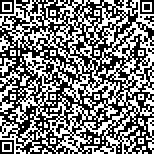郑秀琴,于苏文,何益民,等.高频重复经颅磁刺激对帕金森病患者临床症状及其细胞衰老相关因子的影响[J].中华物理医学与康复杂志,2022,44(5):427-432
扫码阅读全文

|
| 高频重复经颅磁刺激对帕金森病患者临床症状及其细胞衰老相关因子的影响 |
|
| |
| DOI:10.3760/cma.j.issn.0254-1424.2022.05.010 |
| 中文关键词: 帕金森病 经颅磁刺激 细胞衰老相关因子 |
| 英文关键词: Parkinson′s disease Transcranial magnetic stimulation Cell senescence |
| 基金项目: |
|
| 摘要点击次数: 5160 |
| 全文下载次数: 5041 |
| 中文摘要: |
| 目的 观察高频重复经颅磁刺激(rTMS)对帕金森病患者临床症状的影响,明确rTMS的抗细胞衰老作用,并探讨该作用与其改善帕金森病(PD)患者临床症状的关系。 方法 选择符合标准的PD患者108例,按随机数字表法分为rTMS组和对照组,每组患者54例,另选取在门诊体检的健康受试者54例作为正常组。rTMS组和对照组患者均维持抗帕金森病药物治疗,rTMS组在此基础上增加rTMS治疗,rTMS治疗每日1次,每周治疗5 d,连续治疗4周,对照组则接受假rTMS治疗,正常组不作任何处理。于治疗前、治疗4周后和治疗结束1个月后分别对2组患者进行临床运动症状[包括统一的帕金森病评定量表(UPDRS)评分、计时运动试验和10 m折返运动试验]和非运动症状评估[包括汉密尔顿抑郁量表(HAMD)、汉密尔顿焦虑量表(HAMA)和 简易精神状况量表(MMSE)],并于上述时间点采集2组患者和正常组的晨空腹静脉血,进行实验室检测[包括血清肿瘤坏死因子(TNF)、白细胞介素-6(IL-6)、白细胞介素-1β(IL-1β)和基质金属蛋白酶-3(MMP-3)]。 结果 治疗4周后和治疗结束1个月后,rTMS组患者的UPDRS Ⅰ、UPDRS Ⅱ、UPDRS Ⅲ评分、UPDRS总分、计时运动试验和10 m折返运动试验与组内治疗前和对照组同时间点比较,差异均有统计学意义(P<0.05)。治疗4周后和治疗结束1个月后,rTMS组患者的HAMA评分、HAMD评分、MMSE评分、P300潜伏期和波幅组间比较,与组内治疗前和对照组同时间点比较,差异均有统计学意义(P<0.05)。治疗4周后,rTMS组的MMP-3水平显著低于对照组同时间点,差异有统计学意义(P<0.05);治疗结束1个月后,rTMS组的TNF、IL-6、IL-1β和MMP-3水平与组内治疗前和对照组同时间点比较,差异均有统计学意义(P<0.05)。相关性分析结果显示,TNF、IL-6、IL-1β、MMP-3与UPDRS总分均呈正相关(r=0.620、0.446、0.552、0.529)。 结论 高频rTMS治疗可改变细胞衰老相关表型,进而对PD患者的运动症状和非运动症状有较好的治疗效果。 |
| 英文摘要: |
| Objective To investigate any anti-aging effect of repeated transcranial magnetic stimulation (rTMS) and explore the relationship between the effect and relief of clinical symptoms in patients with Parkinson′s disease (PD). Methods A total of 108 PD patients were randomly divided into an rTMS group and a control group, each of 54, while another 54 healthy counterparts were selected to form a normal group. In addition to anti-PD drug therapy, the rTMS group was given daily rTMS treatment, 5 days a week for 4 weeks, while the control group received sham rTMS treatment, with no treatment of the normal group. Before the treatment and after 4 weeks of treatment as well as and 1 month after the ending of the treatment, the subjects′ clinical exercise symptoms were evaluated using the Unified Parkinson′s Disease Rating Scale (UPDRS), a timed exercise test and the 10m re-entry exercise test. Non-exercise symptoms were assessed using the Hamilton Depression Scale (HAMD), the Hamilton Anxiety Scale (HAMA) and the Mini-mental State Examination (MMSE). Fasting venous blood samples were analyzed to quantify the serum levels of tumor necrosis factor (TNF), interleukin-6 (IL-6), interleukin-1β (IL-1β) and matrix metalloproteinase-3 (MMP-3). Results Four weeks and 1 month after the treatment, the average UPDRS scores, exercise test times and 10m re-entry exercise test results of the rTMS group were significantly better than those before treatment and significantly better than those of the control group at the same time point. The rTMS group′s average HAMA, HAMD and MMSE scores, as well as its average P300 latency and amplitude were also significantly better than those of the control group at the same time point and significantly better than those before treatment. After 4 weeks, the average MMP-3 content in the rTMS group was significantly lower than the control group′s average, and after a month the average levels of TNF, IL-6, IL-1β and MMP-3 of the rTMS group were all significantly different from those before treatment and those of the control group. The TNF, IL-6, IL-1β and MMP-3 levels were all positively correlated with the average UPDRS total score. Conclusion High-frequency rTMS therapy can change the phenotypes related to cell senescence, and thus has good therapeutic effect on motor and non-motor symptoms of PD. |
|
查看全文
查看/发表评论 下载PDF阅读器 |
| 关闭 |
|
|
|